Offshoring vs nearshoring decisions once centred on headline salary gaps, yet 2025 demands a fuller calculation that blends wage differentials with compliance exposure, travel spend, and geopolitical risk. Companies that misjudge these factors often lock themselves into brittle cost structures just when competition heats up. This guide uses the lens of offshoring vs nearshoring to unpack every element of expense, highlight emerging price trends, and show how Workforce Africa helps multinationals and scale-ups strike the right balance.

The Real Price Of Talent In 2025
Labour remains the largest budget line, so offshoring vs nearshoring choices start with market-rate engineers, analysts, or support agents. While a senior developer in São Paulo averages twenty-eight thousand dollars and the same role in Nairobi averages twenty-two, salary is only the opening bid. Add social taxes, mandatory pension, and health cover and the gap narrows. A detailed comparison of offshoring cost savings statistics from Gartner, Avasant, and Everest shows labour makes up sixty to seventy per cent of total run rate in the first year, then falls as automation reduces repetitive work.
Compliance, Tax, And Currency Volatility
Many nearshore outsourcing companies market shorter flight times, but the real cost pivot is regulatory. Latin American jurisdictions offer strong intellectual-property protections but require severance packages that reach six months of pay after two years of service. Some African states offer tax holidays for export-oriented tech parks, cutting payroll tax by up to ten percentage points. When finance teams run their offshoring vs nearshoring models, they now include hedging fees for volatile currencies and estimate the impact of quarterly rule changes on take-home pay.
Infrastructure And Time-Zone Logistics
Offshoring vs nearshoring conversations frequently cite latency and after-hours collaboration. Improved undersea cables have reduced page-load delays between Lagos and London to under one hundred milliseconds, while daylight overlap between Nairobi and Berlin supports shared agile ceremonies. Nearshore teams in Portugal or Poland align easily with North American mornings, yet cost more per hour. African hubs sit in a sweet spot for companies serving Europe and the Middle East, giving up to six overlapping hours without the premium rates of Western Europe.
Travel, Management Overhead, And Culture
Executives still fly to bond with teams, and airfares weigh on budgets. A return ticket from New York to Lisbon averages eight hundred dollars and six hours each way. Nairobi adds four hours of flight and three hundred dollars more, but hotel and per diem costs run forty per cent lower. The offshoring vs nearshoring calculus now models annual travel at two visits per team per year, swapping blanket assumptions for scenario plans. Culture gaps also carry cost; firms invest in leadership exchanges, coworking sponsorships, and language coaching to smooth collaboration.
Security And Geopolitical Stability
Cybersecurity liability transforms the price sheet. Nearshore regions that align with European General Data Protection Regulation can incur lower audit costs. African service centres are responding with ISO 27001 certification and tier three data centres, shrinking the differential. Political risk insurance premiums add another layer. A World Bank snapshot shows that premiums on a ten-million-dollar project in Kenya or Ghana average 1.8 per cent, close to Mexico’s 1.6 per cent and well below parts of Asia. Once again the offshoring vs nearshoring balance shifts as risk spreads converge.
Nearshoring Vs Offshoring Pros And Cons At A Glance
An honest debate on nearshoring vs offshoring pros and cons shows neither option wins every category. Nearshore hubs deliver swift site visits, cultural affinity, and regulatory familiarity; offshore hubs offer deeper talent pools and wider cost bands. Decision makers now create weighted matrices that score wage spread, skill depth, data privacy, and supply-chain resilience, then update quarterly. The most flexible firms mix the two, using nearshore squads for discovery sprints and African offshore teams for ongoing maintenance and analytics.
How Workforce Africa Reduces Total Cost Of Ownership
Workforce Africa acts as a single point of accountability for global employers exploring the offshoring vs nearshoring spectrum. Our legal entities in twenty key African markets cut entity-setup costs, handle payroll compliance, and offer transparent fee structures so finance leaders avoid hidden mark-ups. We benchmark offshoring cost savings statistics against your internal spend, then build models that track real-world variance over time. Clients receive monthly dashboards covering productivity, currency impact, and attrition so they can tweak staffing plans before budget shocks appear.
Building A Comparative Cost Model
Start with direct payroll. Multiply average salary by headcount, then add statutory benefits. Next, insert line items for recruitment, onboarding tools, and equipment amortisation. Layer travel allocations based on realistic cadence rather than optimistic estimates. Finally, apply risk multipliers for data security and political insurance. When the spreadsheet flags large swings, ask how nearshore outsourcing companies manage the same variable. Offshoring vs nearshoring is rarely a binary contest; it is a portfolio play where each geography covers the other’s blind spots.
Trend Forecasts For 2025 – 2027
Analysts expect double-digit wage growth in mid-tier European tech hubs, while many African cities will see five to seven per cent, keeping the offshoring vs nearshoring wage gap alive. Energy costs, a hidden driver of data-center pricing, will rise faster in colder climates, nudging storage and compute contracts toward equatorial regions. Governments in Egypt, Nigeria, and Rwanda plan new tech parks with tax incentives, which will affect offshoring cost savings statistics by mid-2026. Savvy firms monitor these signals and refresh their models twice a year.
Practical Steps To Make An Informed Choice
- Run a pilot in two regions. Compare throughput, bug rates, and collaboration ease over six weeks.
- Use the same KPIs. Offshoring vs nearshoring teams must be measured against identical service-level agreements or data loses meaning.
- Factor in ramp-up. The cheaper option may lag in recruitment speed, delaying product releases that hold revenue.
- Review quarterly. Market conditions shift fast; lock-step budgets stagnate.
Workforce Africa helps clients execute these steps, supplying talent rosters in under four weeks, establishing KPI dashboards, and coordinating retrospectives that turn observations into savings.
Conclusion: Choose A Dynamic Mix, Not A Static Answer
Offshoring vs nearshoring is no longer a once-and-done verdict but a dynamic model that changes with wage trends, policy shifts, and product roadmaps. Total cost of ownership includes salary, compliance, travel, risk, and managerial bandwidth. Companies that update these variables regularly gain the freedom to pivot resources where value peaks.
Workforce Africa stands ready to guide your finance and operations teams through that journey, leveraging deep African expertise and global perspective so you capture savings without compromising speed or culture. Engage our advisors today and convert location strategy into a sustained competitive edge.






